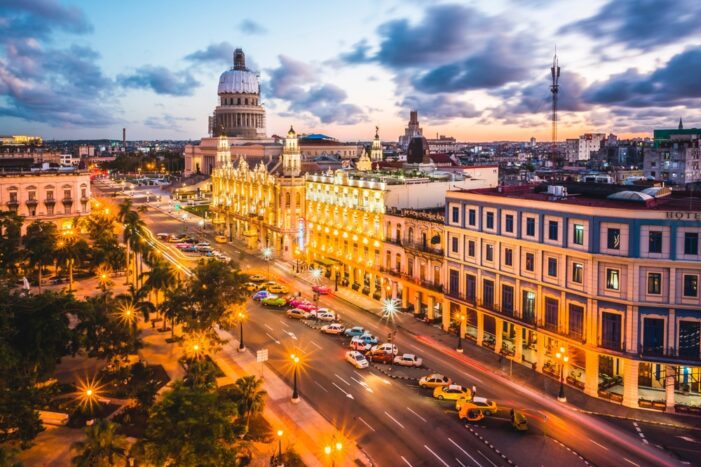Cuba—a large island nation of approximately 11 million people—offers a unique fusion of Afro-Latin Caribbean culture, Spanish-speaking heritage, and evolving economic reforms. While significant U.S. restrictions remain in place, the island also presents targeted opportunities in tourism, agriculture, renewable energy, biotech, and creative sectors. This article explores Cuba’s culture, linguistic landscape, economic resources, investment pathways, and strategic approaches tailored for African American investors.
- Cultural Identity & Heritage
Cuba’s rich culture reflects deep West African, Spanish colonial, and Taíno roots. Roughly 60% of the population is Afro-Cuban or of mixed African descent, and African traditions are woven into music, dance, cuisine, and religion.
Cuban music—son, rumba, mambo, cha‑cha‑chá, salsa—is globally celebrated. Cuban dance and percussion traditions stem directly from African rhythms and syncretic Spanish forms. The island’s national art forms, such as Afro-Cuban ballet or Lucumí religious ceremonies tied to Santería, offer culturally resonant opportunities for African American creatives.
Cuisine—featuring black beans and rice (moros y cristianos), ropa vieja, plantains, and cane-based spirits—blends African and Spanish flavors. This culinary tradition can inspire diaspora-rooted tourism or food ventures.
- Language Landscape
Spanish is Cuba’s official and dominant language; Cuban Spanish is accented and regionally unique. Lucumí, a Yoruba-derived liturgical language used in Santería, carries West African heritage significance, though it is not widely spoken as a daily tongue. Haitian Creole also appears in immigrant communities from Haiti and the Dominican Republic.
For African American investors, navigating Cuba likely requires Spanish fluency or reliance on bilingual advisors—but familiarity with Afro-cultural themes may enhance community engagement.
- Economic Structure & Resources
Cuba’s GDP per capita is modest—nominal ~$18,300 in 2023—with marked poverty and inequality, despite strong public health and literacy metrics (HDI ≈ 0.76).
Key economic sectors include:
Tourism
Despite dips due to sanctions and underinvestment, tourism remains vital—drawing millions annually with cultural heritage, beaches, colonial cities, and eco-tourism appeal. Havana, Trinidad, and Viñales attract heritage travelers seeking an authentic Afro-Caribbean experience.
Agriculture & Natural Resources
Cuba exports sugar, tobacco, coffee, nickel, and seafood. Agricultural reform includes leaseholds of idle state land for crop production, though foreign investors face restrictions on ownership and repatriation of profits.
Renewable Energy & Infrastructure
China has stepped in to drive energy modernization—funding the construction of over 55 solar parks in 2025 alone, expected to cover two-thirds of daytime energy demand. Additional ports and telecom infrastructure are part of broader Chinese Belt and Road engagement. Meanwhile, Russia has pledged US$1B in infrastructure investment by 2030, including subsidized interest loans to attract business participation.
Biotechnology, Health & Education
Cuba has a globally respected biotech and medical sector (notably in vaccines and diagnostic tools). Its high literacy rate (≈99.8%) and strong medical infrastructure support potential partnerships, though foreign firms face regulatory complexity.
- Legal Framework & Investment Incentives
Cuba’s Foreign Investment Act (1995, updated recently) allows three investment vehicles: foreign–Cuban joint ventures, international economic associations, and wholly foreign-owned companies. Each must undergo negotiation via the Ministry of Foreign Investment and Economic Cooperation, with approval required from the Council of State or Ministers depending on sector and size.
Incentives include tax holidays, special import/export regimes, and the creation of wage or incentive funds benefiting Cuban workers. However, the state retains majority control in most ventures, and investors must lease assets rather than own them outright in many cases. Leases of state land are granted typically for 10 years renewable terms, and physical property built on it may revert to the state upon lease expiration.
- U.S. Restrictions & African American Investor Challenges
The U.S. embargo and Helms‑Burton Act prohibit most U.S. persons—including U.S. citizens or permanent residents—from directly investing in Cuban entities unless licensed by the U.S. Treasury’s OFAC. That includes foreign subsidiaries controlled by U.S. entities.
Despite this, Cuban Americans or African Americans with foreign citizenship may invest via third-country entities—but such activity carries legal risk. A recent proposal in Cuba suggested granting residency or immigration privileges to foreign investors—but its status remains uncertain. For U.S. investors, a cautious approach is essential.
- African American–Focused Opportunities & Strategy
Cultural Tourism & Diaspora Linkages
Develop heritage tourism ventures that celebrate Afro-Cuban music, Santería art, Cuban dance, and gastronomy. Initiatives could include cultural tours, guest houses, or festival collaborations in cities like Havana or Santiago.
Medical & Boutique Biotech Collaborations
Partner with Cuban biotech institutes on joint research or training programs, especially in areas like biologics, vaccines, or health education—leveraging Cuba’s medical reputation and diaspora trust.
Renewable Energy & Agri-Tech Initiatives
Collaborate on solar energy or sustainable agriculture projects funded or supported by Chinese-backed infrastructure programs. Leasing opportunities on state land could provide testbeds for climate-resilient farming or solar farms.
- Strategic Roadmap
- Clarify legal eligibility: U.S. citizens must ensure compliance with OFAC rules; diaspora individuals with dual passports may engage through non-U.S. preparatory structures.
- Engage bilingual advisors: Legal, cultural, and investment counsel fluent in Spanish and with Cuban connections is vital.
- Form local partnerships: Operate within state-sanctioned joint-venture formats in targeted sectors (tourism, agriculture, energy).
- Align with national priorities: Focus on renewable energy, food security, or cultural tourism to tap into government licensing support.
- Embed Afro-diaspora value: Infuse branding, storytelling, and employment initiatives that honor Afro-Cuban and African American cultural bonds.
- Outlook & Conclusion
Cuba holds enduring cultural richness, human capital, and evolving economic opportunity. However, it remains a high-risk environment characterized by central control, limited investor rights, currency shortages, and U.S. sanctions.
For African American investors with creative vision, diaspora connection, and strategic leverage—Cuba offers fertile ground in cultural tourism, renewable energy, biotech collaborations, and educational exchange. Success depends on navigating Cuban legal frameworks, maintaining compliance with U.S. sanctions, and partnering authentically with Cuban stakeholders.
As China, Russia, and other nations ramp up infrastructure and energy support, Cuba may enter a transitional economic phase that rewards long-term, patient investors. For diaspora-aligned strategies rooted in cultural identity and social impact, the island can serve as a bridge between profit and purpose.


